Last ride in Hell's Corner: Rafters savor final season on Upper Klamath before dam removal
It’s last call for one of the West Coast’s most unique whitewater rafting trips this summer.
The Upper Klamath River, located southwest of Klamath Falls, has taken rafters on thrill rides for the past four decades thanks to a system of dams that supplies dependable summertime water through the Class IV rapids of Hell’s Corner Canyon.
But the same dams that have made this rafting experience possible have also wrought havoc on the Klamath River’s salmon runs and ecosystem. They’re scheduled for removal beginning later this year in the largest dam removal project in United States history.
Without the water stored behind the dams and released at a specific time each day, river levels won’t be high enough for commercial trips through Hell’s Corner Canyon in summers after dam removal, local outfitters say.
This summer will be the last time to ride Oregon's wildest summer rafting trip, with giant waves and water so warm you don't mind being splashed in the face over and over again.
The main summer season will run June 8 to Sept. 4.
“There really isn’t anything like Hell’s Corner on the West Coast, and that’s because it just has this crazy combination of factors,” Pete Wallstrom, owner of Momentum River Expeditions in Ashland, said. “It’s warm, it's beautiful and has huge summer whitewater. But it's also very approachable and you can bring people down who’ve never been rafting before. It’s one of the best places to introduce people to big whitewater.”
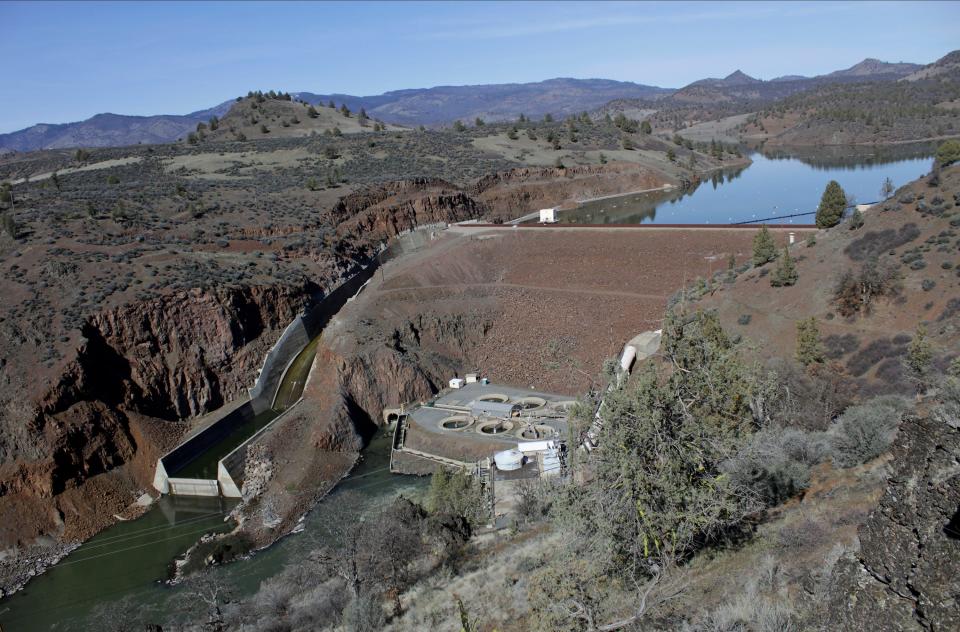
Wallstrom and other Upper Klamath outfitters support dam removal, despite the economic hit.
The removal of four dams from 2023 through 2024 will set free 400 miles of spawning habitat for salmon on one of the most important cultural and ecological rivers in the western United States while reducing toxic algae and restoring the stream to a more natural condition, they say.
The removal should also open new stretches of river for recreation that outfitters hope to run trips on as early as 2025.
“We strongly believe dam removal will lead to a healthier Klamath River system and, if done correctly, will also be good for surrounding communities and local economies,” the Upper Klamath Outfitters Association said in a statement.
But the new stretches won’t offer the same big-water thrill as summers on Hell’s Corner, leading to a bittersweet feeling for river runners.
“It’s like saying goodbye to an old friend,” said Bart Baldwin, who owns Noah's River Adventures in Ashland and has been taking visitors down Hell’s Corner since the 1990s.
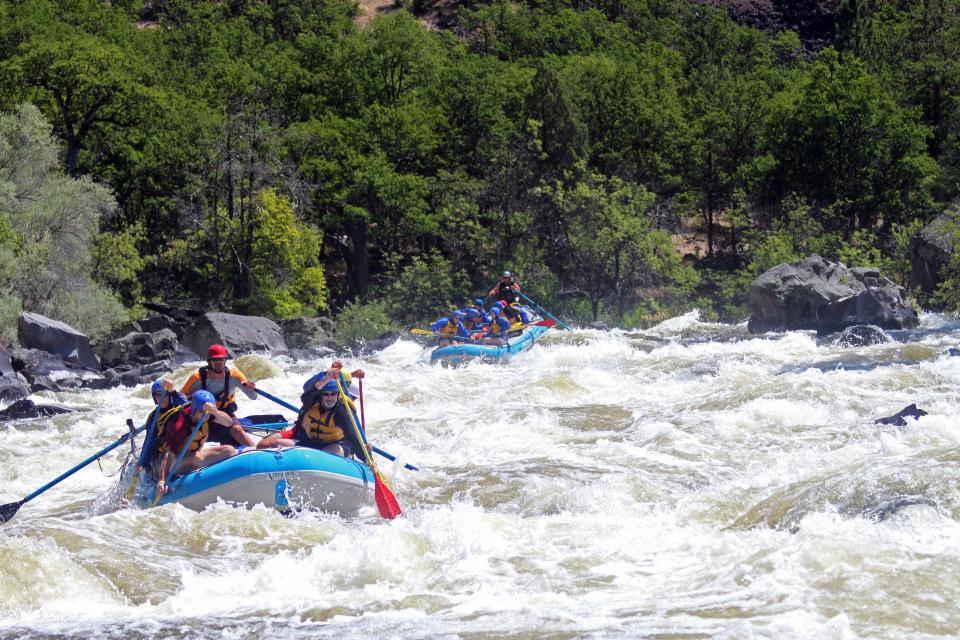
A history of whitewater and the 'Hell's Corner Gang'
Hell’s Corner Canyon was just another piece of water stuck between two dams in a remote corner of southern Oregon until river guide Dean Monroe ran it for the first time in the 1970s.
The whitewater was so fun Monroe’s business, Wilderness Adventures, began offering guided trips in 1981.
“It’s a sleeping giant that’s fast awakening,” Monroe said in a 1981 article in the Medford Mail Tribune. “The river virtually was not rafted before 1979. We got curious and ran the rapids for the first time that year. It’s a beautiful river and relatively close to major highways.”
The name of the canyon came from the Hell’s Corner Gang, who would apparently hide out there after robbing stagecoaches between Klamath Falls and Yreka, California, in the 1800s. The name also fits the scenery, because the river dives through a dark volcanic canyon, making its way from eastern to western Oregon through the Cascade Range, as thundering rapids wait around each turn.
Explore Oregon Podcast: Last ride on Upper Klamath's iconic rapids before dam removal
In the early days, rafters often struggled against Pacific Power & Light — a precursor to PacifiCorp — which owned the dams, to get them to release water at the right times of day so they could raft. Rafters typically put on the river just below JC Boyle Dam and powerhouse as it releases water and take out 13 miles downstream at Copco Reservoir.
In the late 1980s and early 1990s, a new dam was proposed in the middle of Hell’s Corner Canyon. It was known as the Salt Caves Project.
Environmental groups and the Klamath Tribes opposed the dam, and the river was first protected under Oregon’s Scenic Waterway Act by then Gov. Barbara Roberts before being protected by the federal Wild and Scenic Rivers Act.
Ride the hydro
One of the most unique parts of rafting Hell’s Corner is that you’re essentially riding hydropower.
Each morning at about 10:30 a.m., the JC Boyle powerhouse starts to release “peaking flows” from a small reservoir into the river below through turbines to make hydropower.
That’s where the rafters meet it.
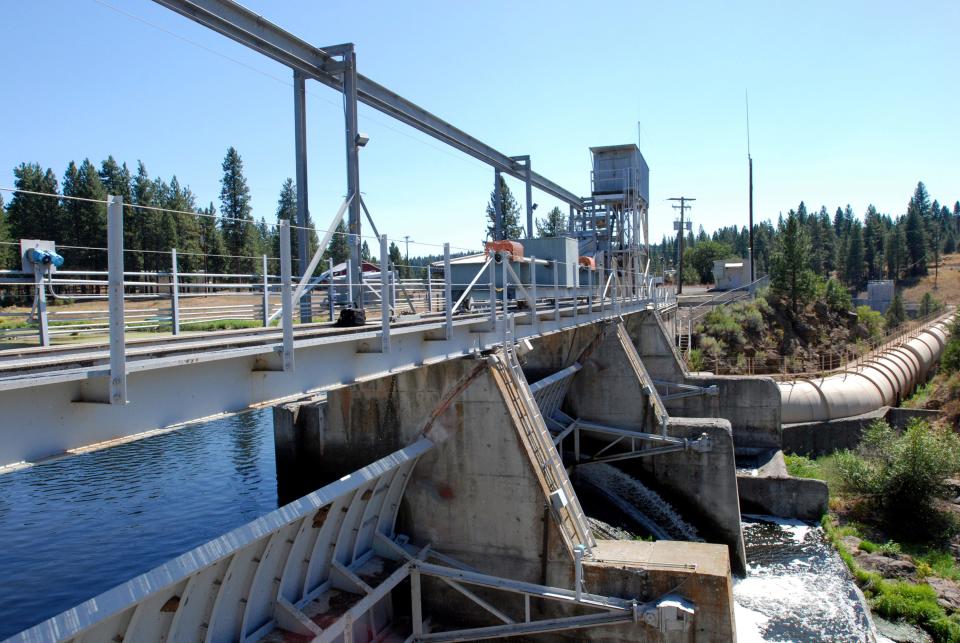
“It’s actually the type of run-of-river dam you see in a lot of other countries,” Wallstrom said. “The basic idea is that the dam is creating electricity when people need it most (at peak times). In summer, that tends to be the heat of the day, so we are rafting on water used to make electricity.”
When the dam isn’t pulsing water to make power, there’s still some water in the river, but not enough to raft or kayak.
A future without dams
Beginning this year, the first of the dams on the Klamath will be removed.
Eventually, four will be taken out — Copco 1 and 2, Iron Gate and JC Boyle.
Once that happens, rafters will lose those daily “peaking flows.” In the summer particularly, the Hell’s Corner section won’t have enough water to run viable commercial rafting trips.
“We did experimental runs up there and at that lower water level it is choked up with rocks to the point that it would be really dangerous and almost impossible to run six people in a raft like we do now,” Baldwin said. “You could probably put two or maybe three people in a boat and get them downriver, but they would have to pay the same amount that six do now. It’s also way more dangerous and way less fun at lower levels.”
The outfitters do plan to run trips into Hell’s Corner during spring, when water levels will likely be high enough. But it won’t be consistent — meaning it’ll be tough to plan around — and it will be during a colder season when fewer people are interested in rafting.
Other segments of the river will open, however, that will allow for summertime runs, including multiple floats for fishing or easy floating with class I and II rapids.
Another whitewater run into a beautiful slot canyon that currently has little water running through it could become rafting outfitters’ new bread and butter, Wallstrom said.
“It will be different from Hell’s Corner — the water won’t be as big and it’ll be more technical, but getting people onto this new slot canyon is super exciting,” Wallstrom said.
Wallstrom also said the Upper Klamath would become more accessible to regular, non-commercial river runners post-dam removal. The current Hell’s Corner run requires a very long shuttle, full day and skilled technical ability, which is why it’s run almost exclusively by outfitters.
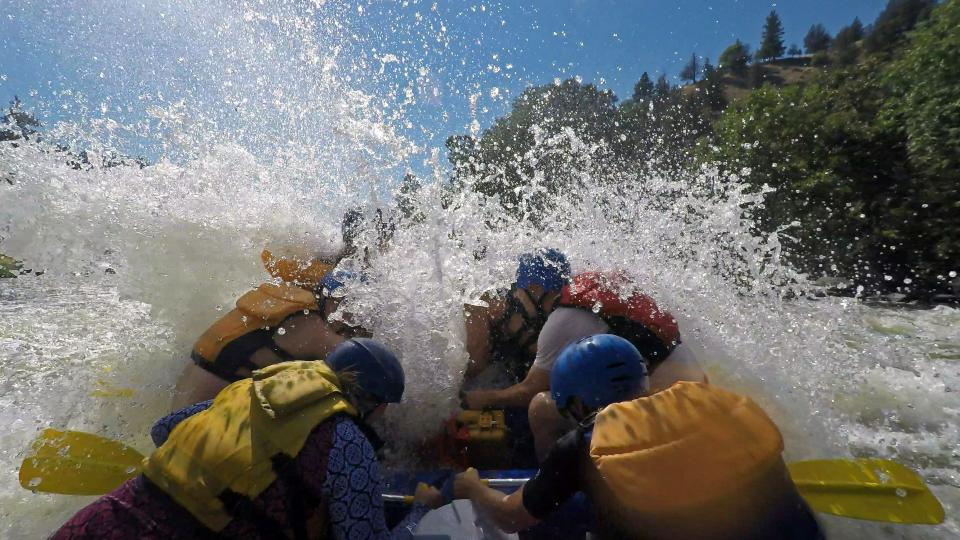
Last dance at Hell’s Corner
Ever since word has gotten out about this being the last summer at Hell’s Corner, Wallstrom said the outfitters have been busy taking phone calls for people wanting a last ride.
But there still are plenty of open slots if you make reservations now.
The trip is most commonly done as a full-day adventure, where people are picked up in Medford, Phoenix or Ashland, driven to the put-in, run the river and return in the evening. In a day trip, people often run the river during the daytime and return to watch a play at Ashland’s Shakespeare Festival in the evening.
“We’ll meet people in downtown Ashland and just say, ‘Hey, if you’ve got an old pair of tennis shoes, a pair of swim trunks and a T-shirt, come with us. You’ll have the time of your life and we’ll have you back in time for the play to start,’” Baldwin said.
Wallstrom, who owns Momentum, offers an overnight experience that involves sleeping two nights at a dedicated campsite in the middle of the river canyon, multiple days of rafting and trail running or mountain biking.
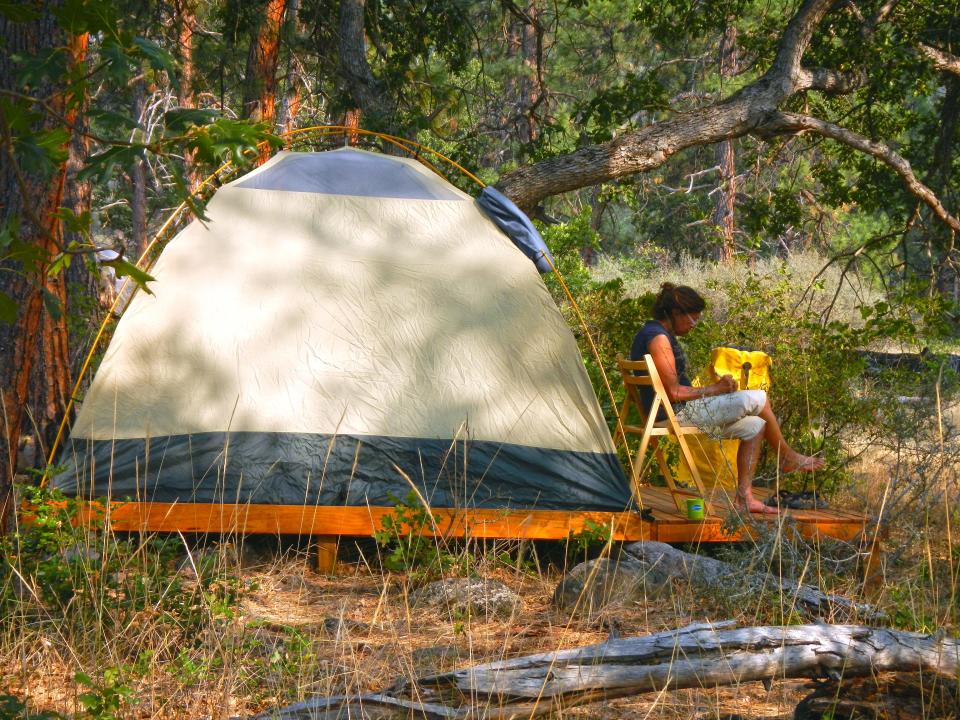
On the river
The trip down the river begins with a nice warm-up — five miles of class II and III rapids that help guides get visitors accustomed to commands and paddling the boat. Then, the rafts enter the canyon to navigate stair-steps of Class IV rapids during the most thrilling part of the trip.
“You get this parade of rapids — one right after the other,” Baldwin said. “There are spots where you can turn around, look upstream and it looks like you’ve come down a big staircase. They’re big waves, it’s technical and it’s just a giggle-fest for adults. That water is warm — 70 to 74 degrees — and you don’t see any roads from the canyon, making it really feel like a wilderness setting.”
For many, this year's trip will likely be their last.
“This is a very bittersweet season," Baldwin said. "I cut my teeth on this river. It’s been a big part of my life and we depend on it to run our business. It’s going to mean big changes to everything we do. But ultimately, the whole point of this is to have a healthier river.
“For now, we’re focused on getting as many people out on the river this year for a last hurrah.”
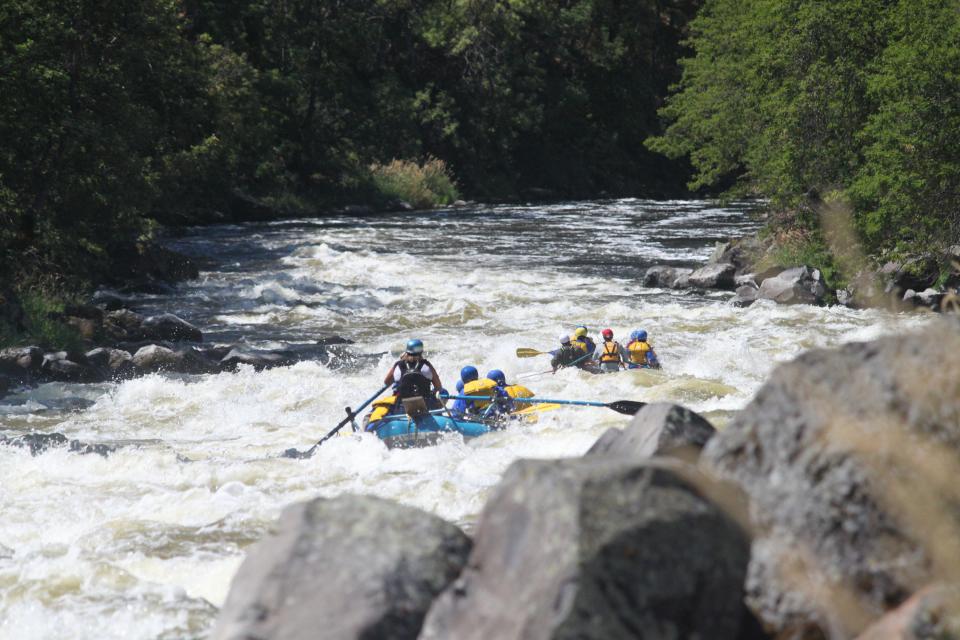
Details: Upper Klamath’s Hell’s Corner Canyon
What: A Class IV whitewater rafting trip, typically done on commercial trips, into a remote stretch of river southwest of Klamath Falls and east of Ashland/Medford.
Who runs commercial trips? Noah's River Adventures, Indigo Creek Outfitters, Momentum River Expeditions.
How is it run: Most do it as a day trip, but overnight options are available.
Cost: $210 to $220 for one day; $790 to $1,090 for two-to-three-day overnight trips.
More info: Listen to the Explore Oregon Podcast’s episode about the rafting trip at StatesmanJournal.com/explore.
Zach Urness has been an outdoors reporter in Oregon for 15 years and is host of the Explore Oregon Podcast. Urness is the author of “Best Hikes with Kids: Oregon” and “Hiking Southern Oregon.” He can be reached at zurness@StatesmanJournal.com or 503-399-6801. Find him on Twitter at @ZachsORoutdoors.
This article originally appeared on Salem Statesman Journal: Oregon rafters plan final year on Upper Klamath River rapids

